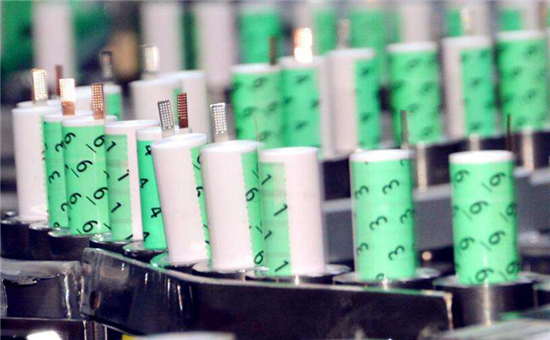Compare 18650 Batteries-Application and Buying
APR 02, 2020 Pageview:1209
Of the range of batteries one thing is obvious that there is no perfect battery for every use. The appropriate battery for your application is to define and trad against others the most important battery metrics. For example, if you need a lot of power to use for your application, the internal resistance of the cell should be minimized. Nevertheless, this also increases inactive components such as current collectors and conductive aids, which converts energy density to light.
To know more about 18650 batteries, read this article.
Which 18650 battery is best for different applications?
18650 battery should be chosen on the basis of following things for different applications.
1-Primary versus secondary –
The decision on whether primary (single) or secondary (rechargeable) batteries is an early choice for battery selection. Devices of occasional usage on daily basis (for instance the smoke detector, a toy or a torchlight), and device charging systems, under which the charging is inefficient, ensure the use of a primary battery. For the continuous and long-term usage of this battery, for example a laptop, a mobile phone or a smartphone, rechargeable batteries are more appropriate.
Primary batteries have a much lower self-discharge rate–an appealing attribute that cannot be recharged or feasible until first use. Secondary batteries have a higher rate of loss of energy. It is less critical due to the ability to regenerate in most applications.
2- Energy versus Power –
A battery's running time is calculated by the mAh or Ah battery capacity and the discharge current a battery will produce over time.
It is useful to test the energy content when comparing batteries with different chemicals for different usage. Multiply the power of the Ah battery by the voltage to obtain energy in Wh to achieve the energy value of the battery then select it accordingly.
3-Voltage –
Another important factor is the battery operating voltage, which is regulated by the used electrode materials. A beneficial distinction for battery relative to lithium based chemicals is to find aqueous or water based batteries. Different other batteries such as Lead acid, carbon zinc and nickel all of them use water-based electrolytes which have nominal voltages that ranges from 1.2 to 2 Volts. Lithium based batteries including 18650, on the other hand, use organic electrolytes with nominal voltages ranging from 3.2 to 4 Volts. A significant number of electronic devices usually work at a minimum voltage of 3 V.
How to avoid buying fake 18650 battery?
You have to be wary of the fakes, like any advertised product. Many sellers also buy cheap cells, bundle them up as labels, and sell them as a genuine products through Amazon or eBay. This is not only a waste of your money, it may be a dangerous waste for you and your device too. You could hurt yourself or harm your computer if the battery turns out to have a completely different rating if you buy a battery for a high-performance system that is assured that it has a secure CDR.
At what they do, battery scammers are fantastic. It's incredibly difficult to distinguish a real battery from a fake. It looks like the real deal from the packaging, branding and online listings. Just by weight can you tell a fake from a real battery.
Most brands have somewhere available the weight of their actual batteries. Any batteries you buy online should be specified by the manufacturer. Even errors in spelling are not a fake, as a real factory company had to find out via Facebook post.
Are all 18650 batteries the same?
No, not all 18650 batteries are same. They all have a diameter of around 18 mm, an duration of 65 mm, a positive and negative end, a disk and an external cover. This is the only similarity between all 18650 batteries.
Let the key differences begin;
Nominal voltage
In 18650 batteries there are three main nominal voltages. 3.2V, 3.6V and 3.7V, respectively. The nominal 3.2V voltage only refers to LiFePO4 chemistry whereas 3.6 and 3.7V are the most widely used voltages.
Discharge value
That is the maximum current volume calculated in Amps that the battery will provide up to the low voltage limit. This can normally be found on the cell / battery factory data sheet.
Capacity
The amount of energy it carries and how long it can use it to calculate the power in Ah (Amp hours) or mAh (milliamp hours) is one of the key characteristics of any battery. Capacity is often called "energy density" as well. It occurs in three types–plain, voltage-dependent Watt hours (Wh) dependent on Ah or mAh power, multiplied and split by 1000. Density of the volume (written as D / L indicating the hours of watt per liter of active material) or Density of the gravimetric energy (written as D / KG and as estimate of the hours of watt per kilogram of active material)
Chemistry
Lithium is found in all 18650 cells in varying quantities, but the capability and discharge rate of the battery is determined by the other chemistry components (and also by their specific amounts) which distinguish all 18650 batteries from each other.
Internal resistance or "fallibility"
It is usually measured in Ohm or Milliohms, this decides whether a battery can absorb energy easily or rapidly. A high IR battery is much more sluggish to absorb the energy than a low IR battery. In general, the higher the battery maximum release rate and therefore lower capacity means the lower the IR.
Color of the wrap
This is not really significant. On all their current products Sony / Murata use Orange, now Sanyo is almost limited to red, Panasonic is a light orange with black lines, Malice are all grey and Samsung is all bright, but it seems like it was based on power bands. LG uses several different colors as well. Yet all red batteries are Sanyo and all green are Panasonic. It is to be said. It is just a discrepancy we highlight here.
- Prev Article: Care of Lithium-Ion Batteries in Power Tools-Care and Practices
- Next Article: Carry-on Lithium Batteries – Care for Your Batteries
Leave Message
Hottest Categories
-
Hottest Industry News
-
Latest Industry News












